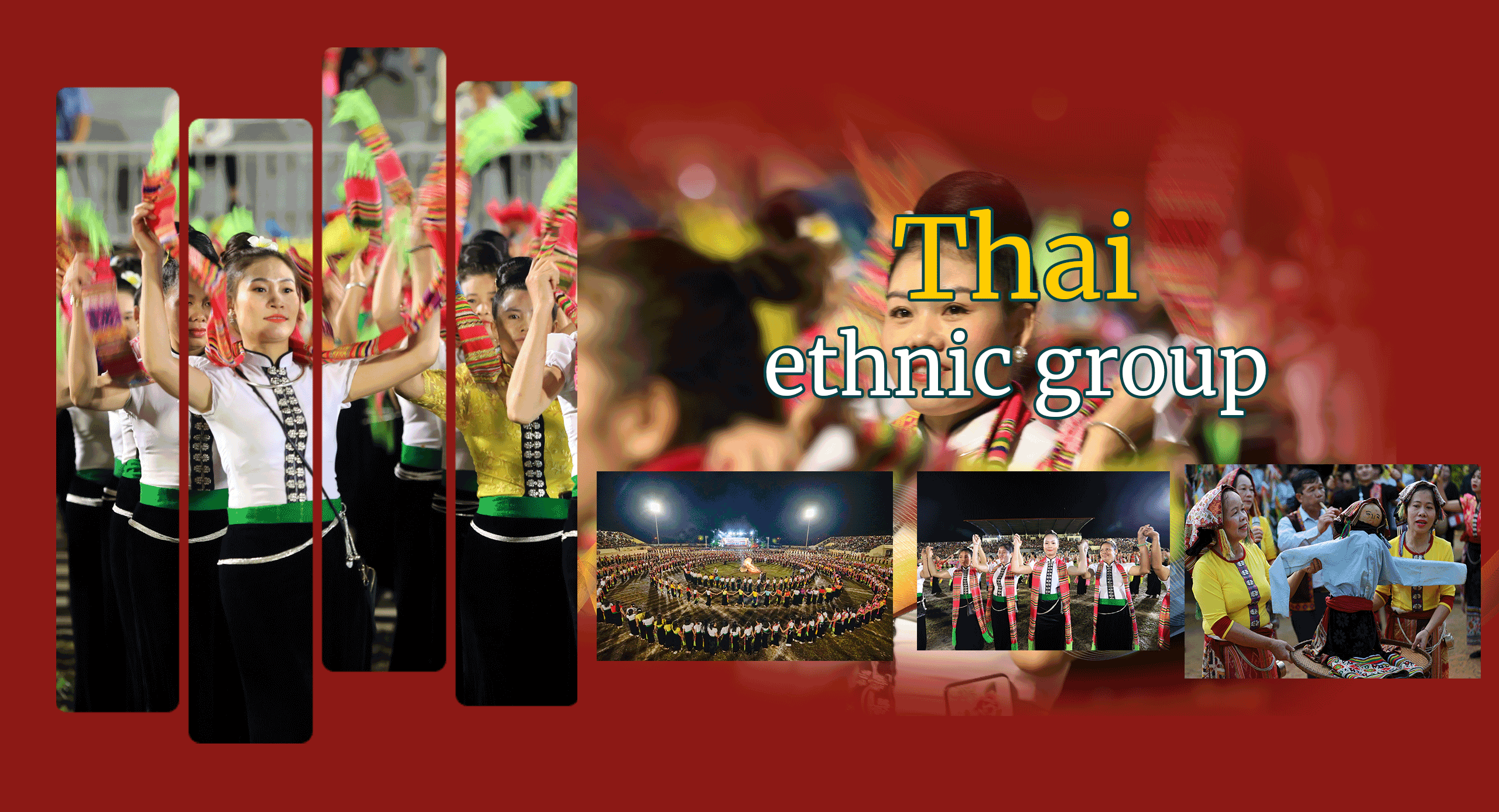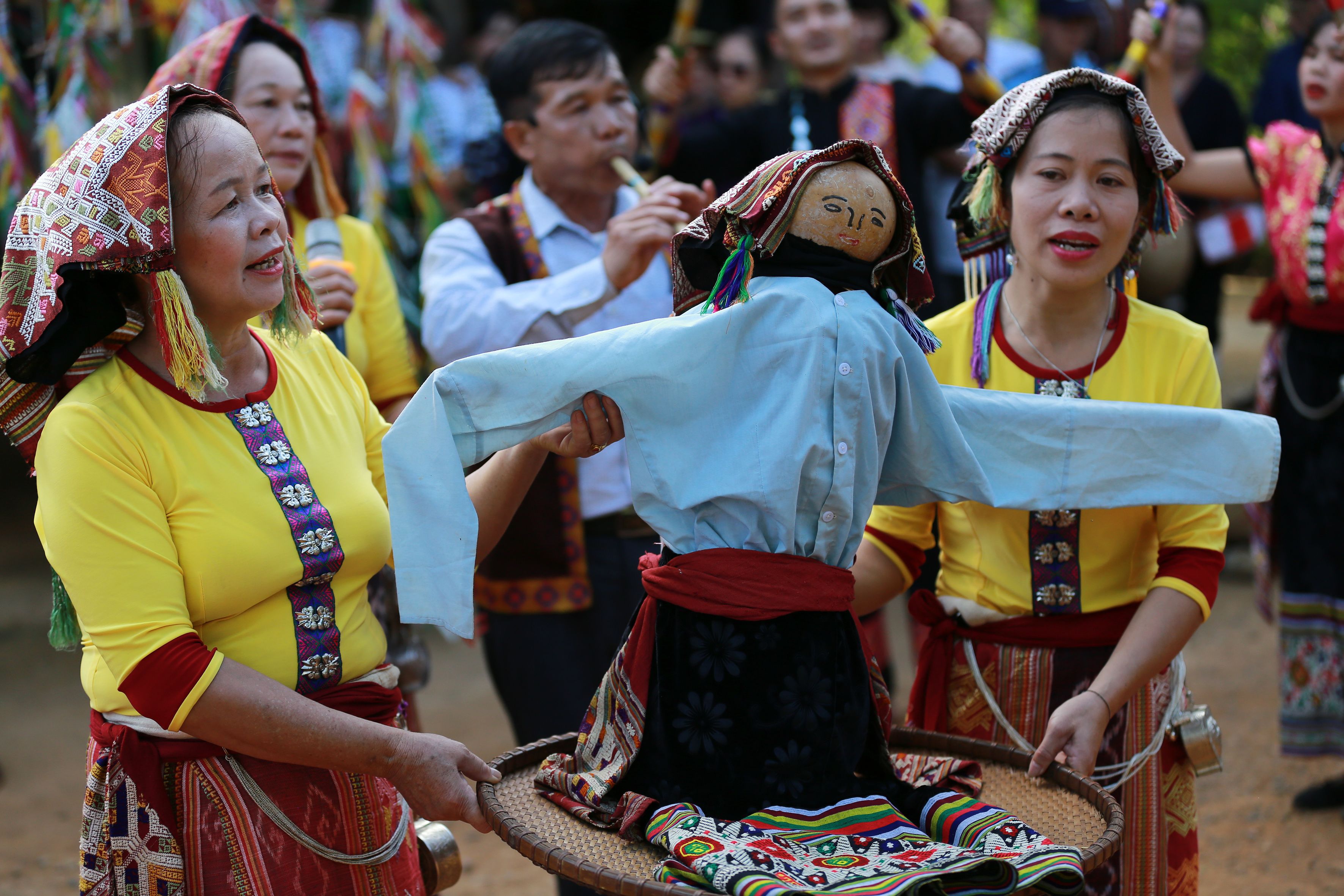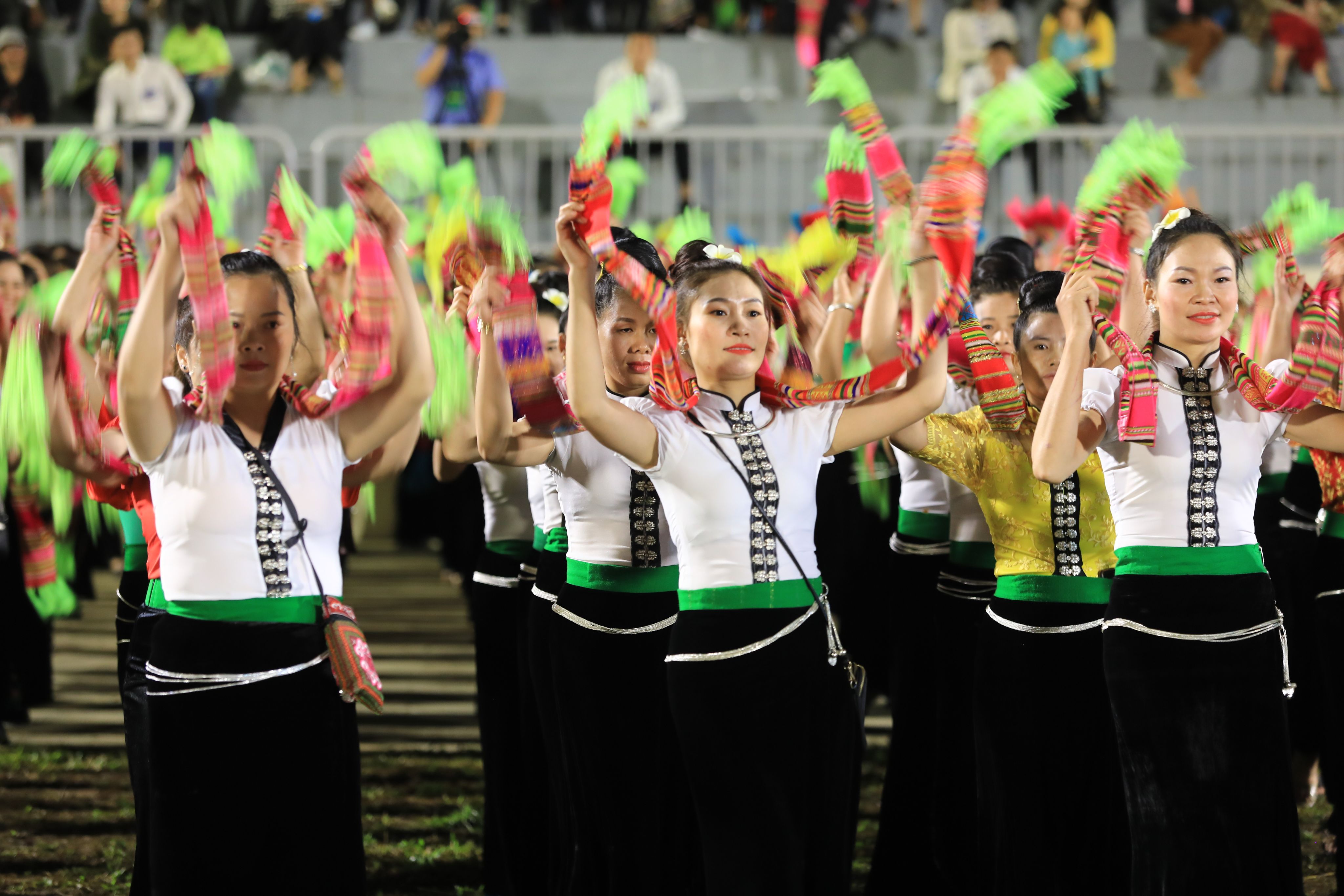
Other names: Tay Thanh, Man Thanh, Tay Muoi, Tay Muong, Hang Tong, Tay Do, Tho
Language: Tay-Thai branch of the Tai-Kadai language family
Residence: Thai people mainly live in the provinces of Hoa Binh, Lai Chau, Dien Bien, Son La, Lao Cai, Yen Bai, Thanh Hoa and Nghe An. The migration process since the early 1990s has expanded their habitation areas to other regions, including the Central Highlands.
History: Thai people have their origin in the Southeast Asian mainland and the ancient ancestors of the Thai people were present in Vietnam since the early times. Thai people in Vietnam consist of various local groups, whose origins and presence in Vietnam are not entirely the same. According to ethnologists, there are two main Thai groups in Vietnam: white Thai and black Thai.
Thai ethnic group
Present in Vietnam since early times, the Thai ethnic group is regarded as a distinctive piece in the mosaic of Vietnam’s 54 ethnic groups.
1. Origin:
Thai people have their origin in the Southeast Asian mainland and the ancient ancestors of the Thai people were present in Vietnam since the early times. Thai people in Vietnam consist of various local groups, whose origins and presence in Vietnam are not entirely the same. According to ethnologists, there are two main Thai groups in Vietnam: white Thai and black Thai.
2. Geographical distribution
Thai people mainly live in the provinces of Hoa Binh, Lai Chau, Dien Bien, Son La, Lao Cai, Yen Bai, Thanh Hoa and Nghe An. The migration process since the early 1990s has expanded their habitation areas to other regions, including the Central Highlands.
3. Population, language:
Population: According to a survey of 53 ethnic minority groups in 2019, the Thai ethnic group has a population of 1,820,950, including 910,202 men and 910,748 women.
Language: Tay-Thai language branch of the Tai-Kadai language family.

Thai people’s moon lady welcoming ritual (Photo: THANH DAT)
Thai people’s moon lady welcoming ritual (Photo: THANH DAT)
4. Main features:
- Traditional social institution: “ban muong” institution, a pre-state organisation form, marking the high development level of the Thai society.
- Religion and belief: Thai people worship ancestors, agriculture gods, and mountain and river gods. The worship is associated with festivals around the year such as the ploughing festival, the festival to pray for rain, the rice soul procession festival, the festival to pray for good harvests, the new rice festival. The wedding and funeral ceremonies follow traditional customs.
The black Thai’s offerings to the ancestors take place in the 7th and 8th lunar months. The white Thai celebrate the lunar new year.
- Housing: Thai people live in stilt houses with various forms. The “khau cut” symbol is the distinctive symbol of the black Thai’s stilt house, whose roof is in the shape of a turtle shell. Meanwhile, the white Thai’s house is usually erected on a flat rectangular area, with wooden railings installed in front of or around the house. One of the architectural characteristics of the Thai people’s stilt house is the staircase, where spiritual, cultural, religious values and gender and childbirth taboos are preserved.
- Costumes: The black Thai and white Thai people share many similarities in their daily costumes but still have some differences. White Thai women wear bright short shirts with silver buttons in the shape of butterflies or bees; and black skirts with no patterns. Their headscarves are two metres long and made of indigo fabric.
Black Thai women wear short dark-coloured shirts (indigo or black). Unmarried women do not tie their hair into a bun but wear an elaborately embroidered scarf called a “khan pieu”. Married women do their hair in a style called “tang cau” (bun on top of the head). If their husbands die, they can lower their buns. Black Thai women wear various jewelleries such as necklaces, bracelets, earrings, hair brooches, and chatelaines.

(Photo: THANH DAT)
(Photo: THANH DAT)
Men's costumes include short and long shirts. The short shirt is made of indigo fabric in slit chest style with long or short sleeves and round neck. Buttons are made of copper or fabric. The shirt does not have and decorative patterns, and only during formal occasions that the shirt is worn with two lead balls hanging to the two sides.
- Food: Glutinous rice, rice cooked in bamboo tubes, straw liquor and barbecued foods are notable features of Thai people’s food culture.
- Arts: Thai people have distinctive xoe dances, sung poetry and rich love duets. Their traditional musical instruments include the sao lam (bamboo flute) and tieu (end-blown flute).
- Folk games: Thai people’s popular games include con ball throwing, tug-of-war, horse racing, pleasure boating, crossbow, xoe dance, spinning tops, and mak le ball.
- Education: According to a survey of 53 ethnic minority groups in 2019, the rate of literacy among those aged 15 and above is 81.6%; the primary school attendance rate is 100.8%, the secondary school attendance rate is 94.6%, the high school attendance rate is 56.5%. The rate of people aged 15 and above literate in their ethnic language is 4.3%. The school attendance rate of Thai children aged 5 and above is 99.4%.

Thai xoe dance. (Photo: THANH DAT)
Thai xoe dance. (Photo: THANH DAT)
5. Economic conditions:
Thai people’s agriculture is based on wet rice and other crops such as soybean, maize, sweet potato and cassava. Thai people have applied science and technology to agricultural production to bring higher economic benefits. Their agricultural production is increasingly market-oriented instead of subsistence farming.
Animal husbandry: mainly pigs, water buffalos, goats and silkworms. Free-range farming is no longer the main form of animal husbandry and has been replaced by caged animal farming. In addition, Thai people have other crafts such as fabric weaving and rattan and bamboo weaving.
Today, in the general trend of development, income from non-agricultural activities such as tourism services and trading are growing thanks to improvements in transport, market demand and the State policy.